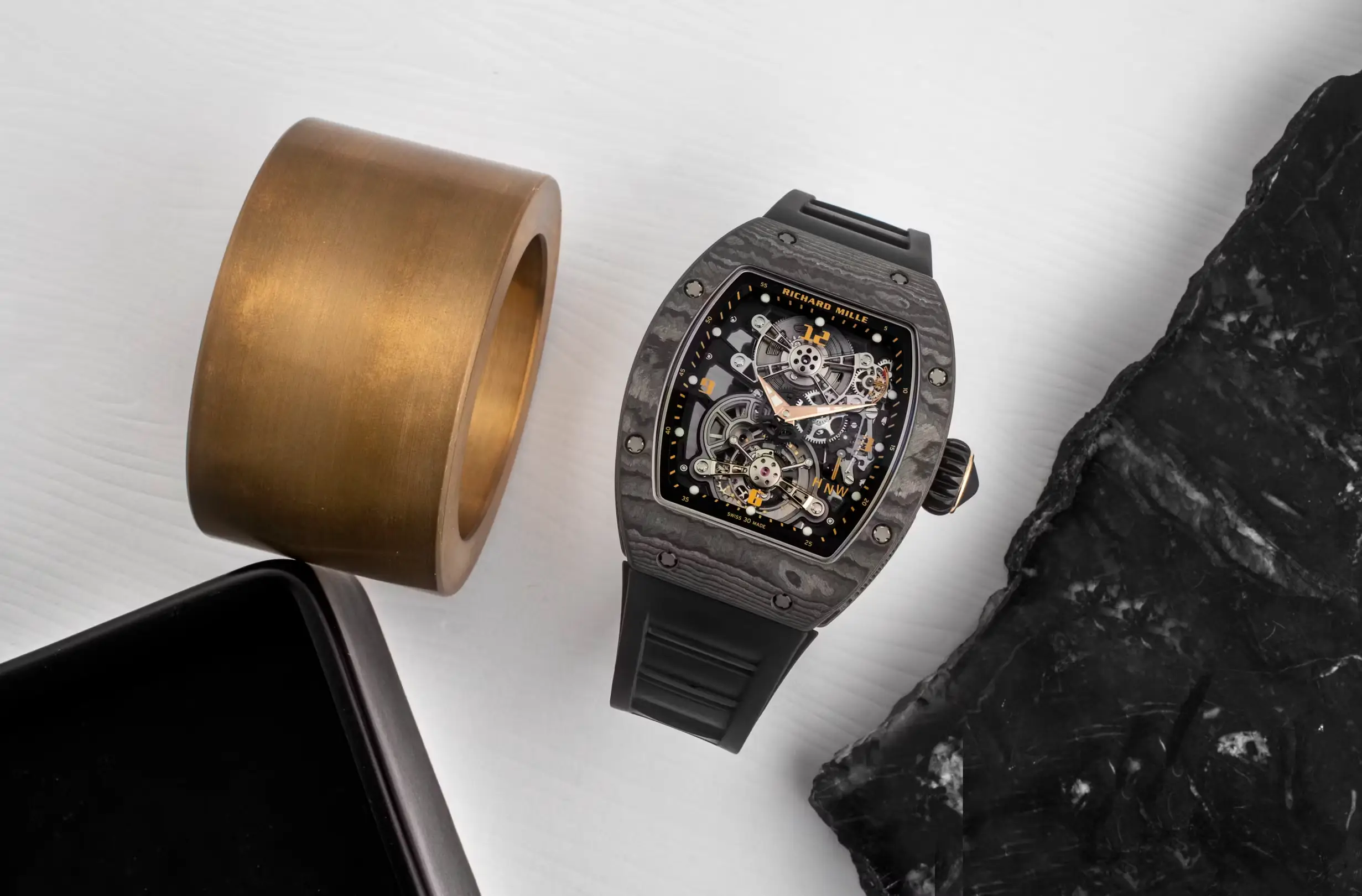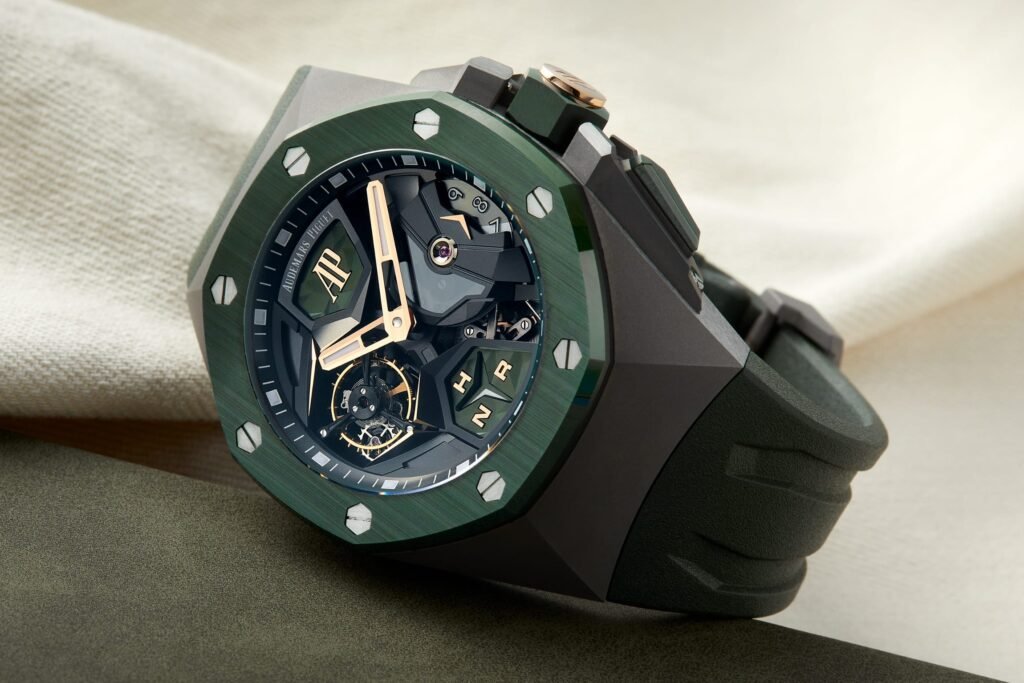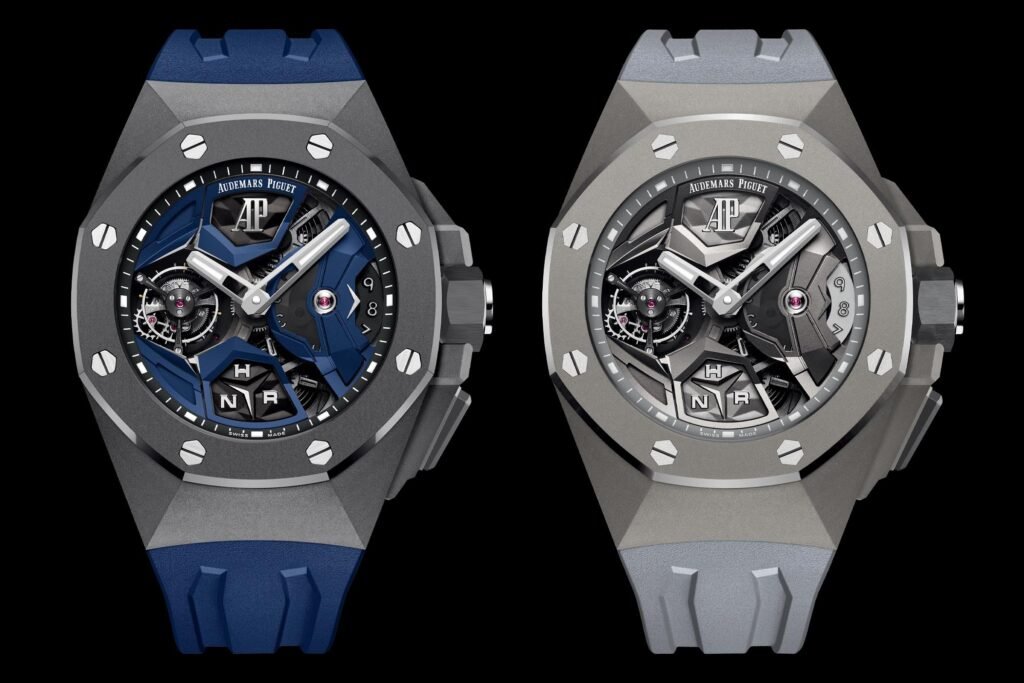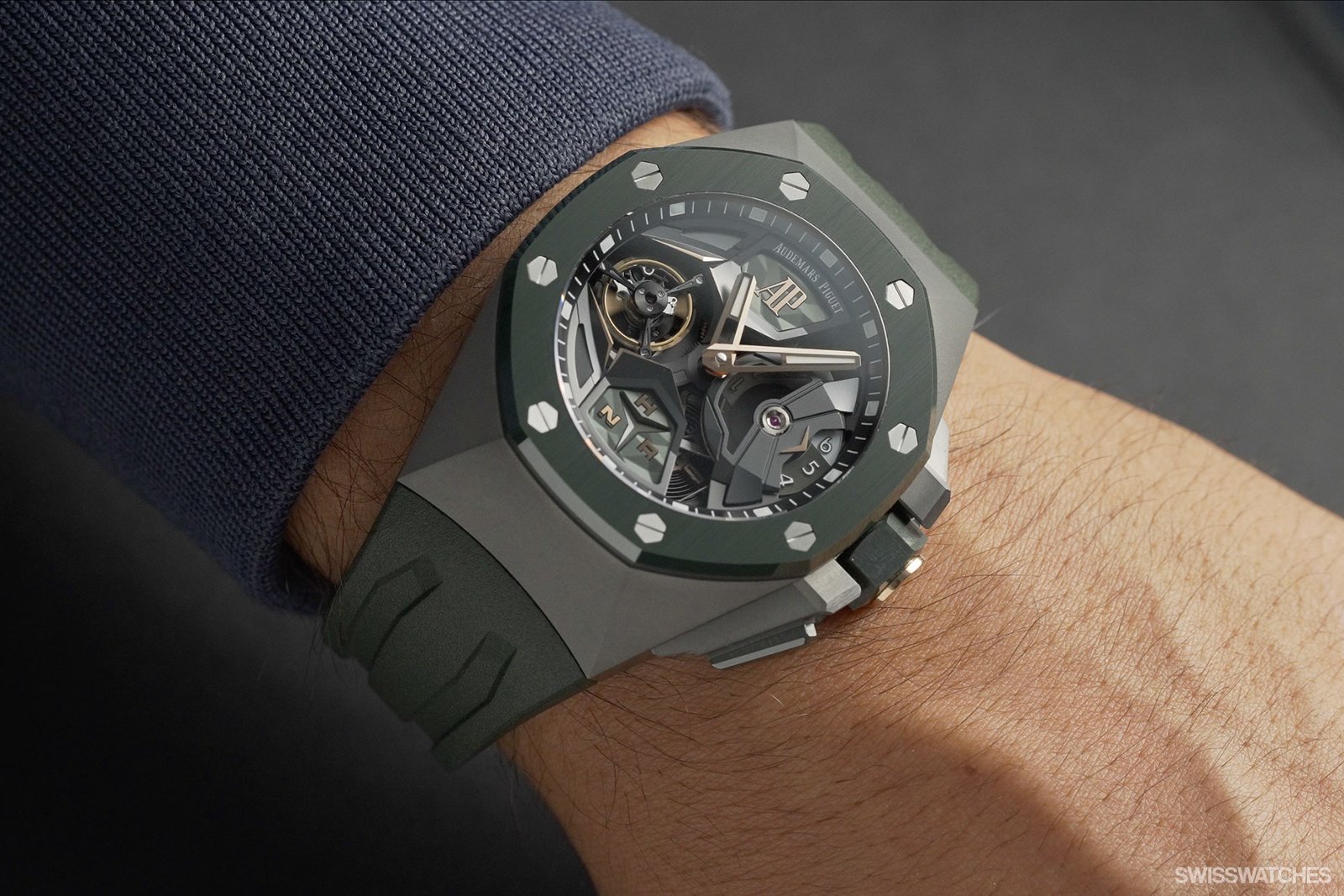
Audemars Piguet Concept vs RM Carbon TPT: two different kinds of bold
If traditional haute horlogerie is about polish and pedigree, these two families of watches throw that rulebook out the window. The AP Concept Series and Richard Mille’s Carbon TPT creations are what happen when you combine six-figure budgets, zero compromise, and a blank sheet of paper.
They’re not for everyone. That’s exactly the point.
These watches don’t whisper luxury. They launch it into orbit. The Concept Series from Audemars Piguet is a lab experiment gone rogue, built with massive tourbillons, sandblasted titanium, and openworked dials that look like sci-fi helmets. The RM Carbon TPT pieces? They take Formula 1 tech, wrap it around a featherweight movement, and dare you to treat a $1M watch like a G-Shock.
But how do they compare? Let’s break it down.

What the AP Concept Series brings to the table
Launched in 2002 with the Royal Oak Concept GMT Tourbillon, the Concept Series was never meant to blend in. It took the Royal Oak silhouette and mutated it into something almost militaristic. But there’s real substance beneath the surface.
Take the Audemars Royal Oak Concept Flying Tourbillon GMT. You’ve got a sandblasted titanium case, a tourbillon with ceramic bearings, a second timezone display, and a power reserve that looks like it belongs on the dash of a fighter jet. Everything is over-engineered — and somehow, it works. The level of industrial finishing AP applies here is obsessive. Sharp bevels, angular bridges, a sapphire crystal that hugs every contour like it was 3D printed.
Then there’s the chronograph iterations. Flyback, column-wheel controlled, integrated into a skeletonised movement that’s somehow legible. These pieces aren’t just design-forward — they’re feats of engineering, built to challenge even Audemars’ own Royal Oak Offshore line.
But beyond the mechanics, there’s a story. The Concept Series is what happens when AP decides to experiment without worrying about commercial success. It’s where the designers and engineers are told, “go nuts.” That freedom shows in every surface.
It’s big. It’s aggressive. But it’s not brash. You can feel the Le Brassus watchmaking backbone running through every component. And because AP produces these in very small numbers, you won’t find one casually sitting in a boutique window. They’re earned — not offered.

Richard Mille and the Carbon TPT revolution
Carbon TPT (Thin Ply Technology) isn’t just marketing fluff. It’s a composite material originally developed for racing yachts and aerospace. Richard Mille adapted it for watchmaking and in the process, created some of the lightest, toughest, and visually wild timepieces ever made.
The process layers hundreds of sheets of carbon fibre, each 30 microns thick, then subjects them to a high-temperature, high-pressure resin infusion. The result? That now-signature wave-like pattern you see on watches like the RM 27-04 Rafael Nadal — which weighs just 30 grams, case and all.
And inside? A suspended calibre hung on steel cables, shockproof to 12,000 Gs. That’s not marketing. That’s physics. Mille’s philosophy is brutal minimalism — strip away everything that doesn’t serve performance, and then make what’s left look like alien tech.
But Mille didn’t stop with materials. The complications are their own breed. Take the RM 27-01, which has a movement baseplate held in tension inside the case — literally floating like a suspension bridge. Or the RM 35-03 with its butterfly rotor that can decouple the winding mass with a push of a button. The message is clear: this isn’t your grandfather’s watch.
Collectors love RM Carbon TPT because it’s rebellious. You don’t wear one to match your tie. You wear it to remind everyone you don’t need a suit.
They’re loud. But they’re also technical marvels. And the more you understand the materials, the finishing, and the innovation, the more they make traditional watches feel… safe.

Innovation vs attitude: which wears best?
If you’re choosing between the Audemars Concept Series and RM Carbon TPT, you’re not looking for a “nice” watch. You want an exosuit for your wrist.
Audemars Piguet gives you that — but with a legacy. You get the Swiss tradition, the high horology chops, the silent nod from other collectors who know what went into that calibre. It feels academic, in the best way possible.
Richard Mille, on the other hand, gives you pure identity. Their pieces are worn by Rafael Nadal while playing, by McLaren drivers during laps, and by collectors who have the confidence to treat a million-dollar watch like a toy. It’s emotional. And it’s visceral.
At Lugano Watches Dubai, we don’t just carry both. We showcase them next to each other so clients can feel the difference — the weight (or lack of it), the texture of the materials, the intent behind the design.

Neither is “better.” But they’re for very different types of collectors.
The Concept Series says, “I know what AP has done — and I want the most extreme version.” The RM says, “I don’t care what anyone else thinks. I know what this means.”
In terms of comfort? RM wins. In terms of historical significance? AP owns it. In terms of shock factor at a private dinner with other collectors? Toss a coin — both will start conversations.
These aren’t watches to end collections with. They’re watches to define collections by.
So whichever you choose, make it count.
